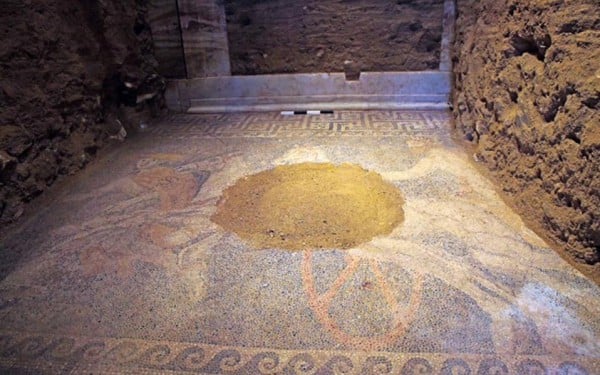Art World
Alexander the Great Tomb Yields Newly-Discovered Mosaic


Henri Neuendorf

One of the largest ancient burial sites ever found in Greece, featuring a magnificent mosaic, is currently being excavated by archaeologists, the BBC has reported. The discovery was made in the northern city of Amphipolis and was announced by the Greek culture ministry on Sunday.
Experts believe that the tomb, dated to the 4th century BC, may be linked to Alexander the Great. The size and splendor of the tomb indicates that it was constructed for a very important individual. Some commentators have suggested that it could have been the resting place of a member of Alexander’s family, perhaps his mother or wife. Alternative suggestions propose that it belonged to an unrelated Macedonian noble, or that it could be a monument.
The centerpiece of the tomb is a three-meter-wide (10 feet) and 4.5-meter-long (15 feet) floor mosaic made up of hundreds colorful pebbles. It depicts a man with a laurel wreath on a horse-drawn chariot led by the Greek god Hermes. In Greek mythology, Hermes conducted the soul into the afterlife.
Experts are currently undertaking the meticulous task of reconstructing a damaged circular area near the middle of the floor with fragments found throughout the tomb. Archaeologists are hopeful that once complete, the reconstruction of the mosaic could provide further clues about the origin and background of the tomb.
Reports have described that the discovery has engendered great Greek patriotism and pride in the austerity-hit country.